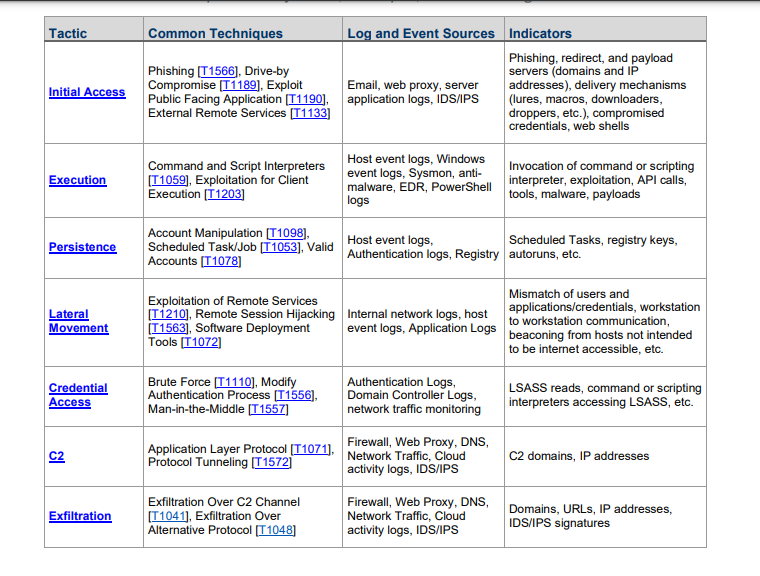What was the initial attack vector? (i.e., How did the adversary gain initial access to the network?)
How is the adversary accessing the environment?
Is the adversary exploiting vulnerabilities to achieve access or privilege?
How is the adversary maintaining command and control?
Does the actor have persistence on the network or device?
What is the method of persistence (e.g., malware backdoor, webshell, legitimate credentials, remote tools, etc.)?
What accounts have been compromised and what privilege level (e.g., domain admin, local admin, user account, etc.)?
What method is being used for reconnaissance? (Discovering the reconnaissance method may provide an opportunity for detection and to determine possible intent.)
Is lateral movement suspected or known? How is lateral movement conducted (e.g., RDP, network shares, malware, etc.)?
Has data been exfiltrated and, if so, what kind and via what mechanism?

This chart shows how to answer these questions. It shows the specific techniques used
at each stage of the attack, as well as indicators of each style of compromise, and most
importantly, where to find artifacts and evedence.

